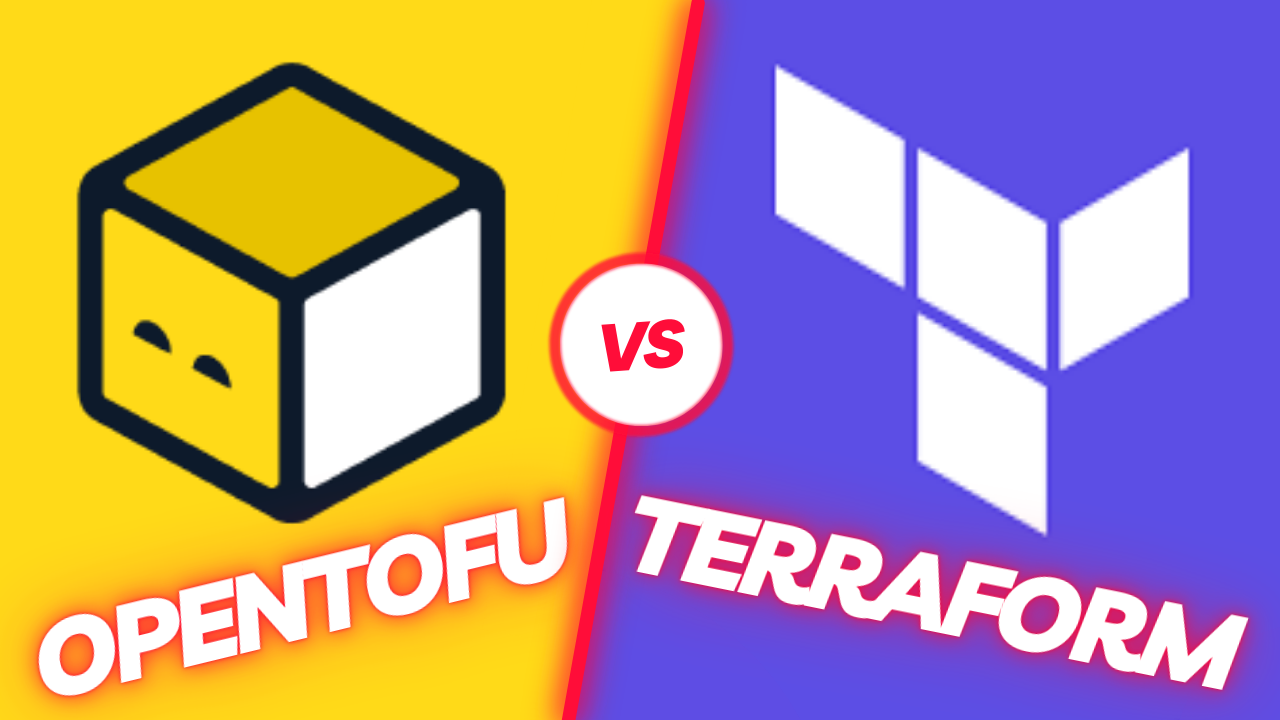
In the fast-evolving world of DevOps and infrastructure management, having the right tools at your disposal can make all the difference. Enter OpenTofu, the open-source alternative to Terraform that’s shaking up the world of infrastructure as code (IaC). OpenTofu empowers you to define cloud and on-prem resources using human-readable configuration files, enabling versioning, reuse, and seamless sharing. In this blog, we’ll explore why OpenTofu is a game-changer for your infrastructure provisioning needs.
OpenTofu vs. Terraform Compatibility
The beauty of OpenTofu lies in its compatibility with Terraform. As it stands, OpenTofu aligns perfectly with Terraform versions 1.5.x, making the transition seamless. This means that you can easily switch from Terraform to OpenTofu without any code modifications, ensuring a hassle-free adoption process. And yes, OpenTofu is production-ready, offering robust capabilities for a wide array of use cases.
How OpenTofu Works?
OpenTofu leverages APIs to create and manage resources across various cloud platforms and services. This versatility stems from the myriad of providers contributed by the OpenTofu community. You can access these providers on the Public Terraform Registry, covering big names like AWS, Azure, GCP, Kubernetes, and even specialized services like GitHub, Splunk, and DataDog.
The core workflow of OpenTofu comprises three stages:
- Write: You define your resources, spanning multiple cloud providers and services. For instance, you can craft a configuration to deploy an application on virtual machines within a Virtual Private Cloud (VPC) network, complete with security groups and load balancers.
- Plan: OpenTofu generates an execution plan outlining the changes it intends to make based on your configuration and the existing infrastructure.
- Apply: Upon your approval, OpenTofu executes the planned operations in the correct order, respecting resource dependencies. If, for instance, you tweak the properties of a VPC and alter the number of virtual machines within it, OpenTofu ensures that it recreates the VPC before scaling the virtual machines.
Why Choose OpenTofu?
- Manage Any Infrastructure: OpenTofu is your one-stop solution, with providers for numerous platforms and services available in the Public Terraform Registry. You can also craft your own providers. Plus, OpenTofu takes an immutable approach to infrastructure, simplifying upgrades and modifications.
- Track Your Infrastructure: OpenTofu’s meticulous planning process keeps you in control. It generates a plan and waits for your green light before making changes. It also maintains a state file, serving as a source of truth for your environment, ensuring your infrastructure aligns with your configuration.
- Automate Changes: Thanks to its declarative configuration files, OpenTofu handles the underlying logic of resource creation. It efficiently provisions resources by creating or modifying non-dependent resources in parallel, streamlining the provisioning process.
- Standardize Configurations: OpenTofu supports reusable configuration modules that define configurable collections of infrastructure. Whether you use publicly available modules from the Terraform Registry or craft your own, OpenTofu encourages best practices and saves you time.
- Collaboration Made Easy: With configurations stored as files, you can commit them to a Version Control System (VCS) and leverage a cloud backend for efficient team collaboration. This ensures a consistent and secure environment with role-based access controls, shared state and secret data, and more.
OpenTofu Language
The OpenTofu language is the primary user interface, telling OpenTofu what to do. It allows you to declare resources, representing infrastructure objects, and offers flexibility and convenience in resource definition. The syntax is straightforward, comprising blocks, arguments, and expressions.
A configuration in OpenTofu can encompass multiple files and directories. The syntax of the OpenTofu language revolves around a set of fundamental elements:
- Resource Declaration: To define resources, you employ a syntax like this:
resource “aws_vpc” “main” { cidr_block = var.base_cidr_block }
- Blocks: Blocks serve as containers for organizing content and typically represent configuration for various objects, such as resources. They come in several forms:
<block_type> “<block_label>” “<block_label>” { # Block body <identifier> = <expression> # Argument }
These blocks have a type, can contain zero or more labels, and include a body capable of housing any number of arguments and nested blocks. The top-level blocks within a configuration file primarily control most of OpenTofu’s features.
- Arguments: Arguments assign values to names and are found within blocks.
- Expressions: Expressions denote values, either as literals or through references and combinations of other values. They are used as values for arguments or can be nested within other expressions.
The OpenTofu language adopts a declarative approach, describing the desired end state rather than delineating the step-by-step processes to achieve that state. When determining the order of operations, OpenTofu considers both implicit and explicit relationships between resources, making the organization of blocks and files relatively insignificant.
Conclusion
OpenTofu is more than just an alternative to Terraform; it’s a robust infrastructure as code provisioning tool that’s taking the DevOps world by storm. With its compatibility, versatility, and user-friendly language, it’s a compelling choice for managing modern infrastructure efficiently. Whether you’re a seasoned infrastructure pro or just starting your journey, OpenTofu deserves a spot in your toolbox. Try it out and experience the future of infrastructure provisioning today.


